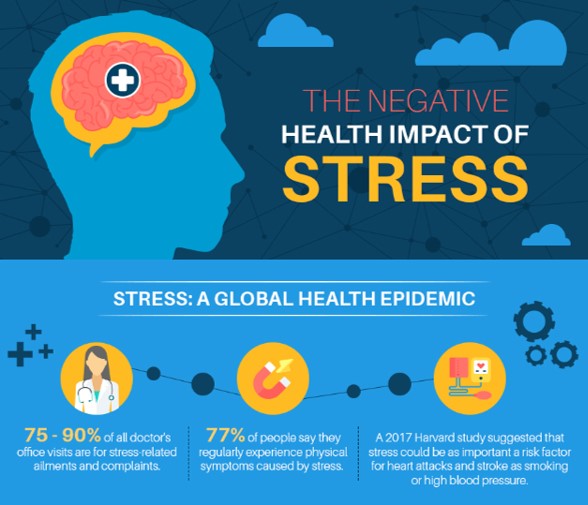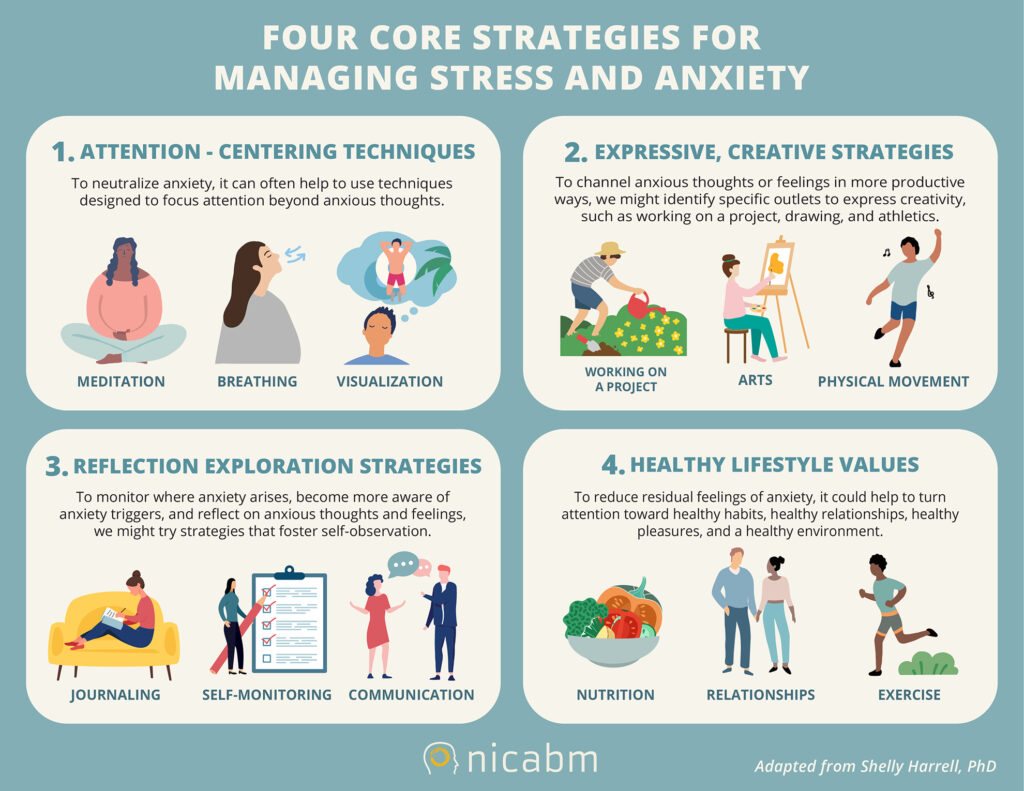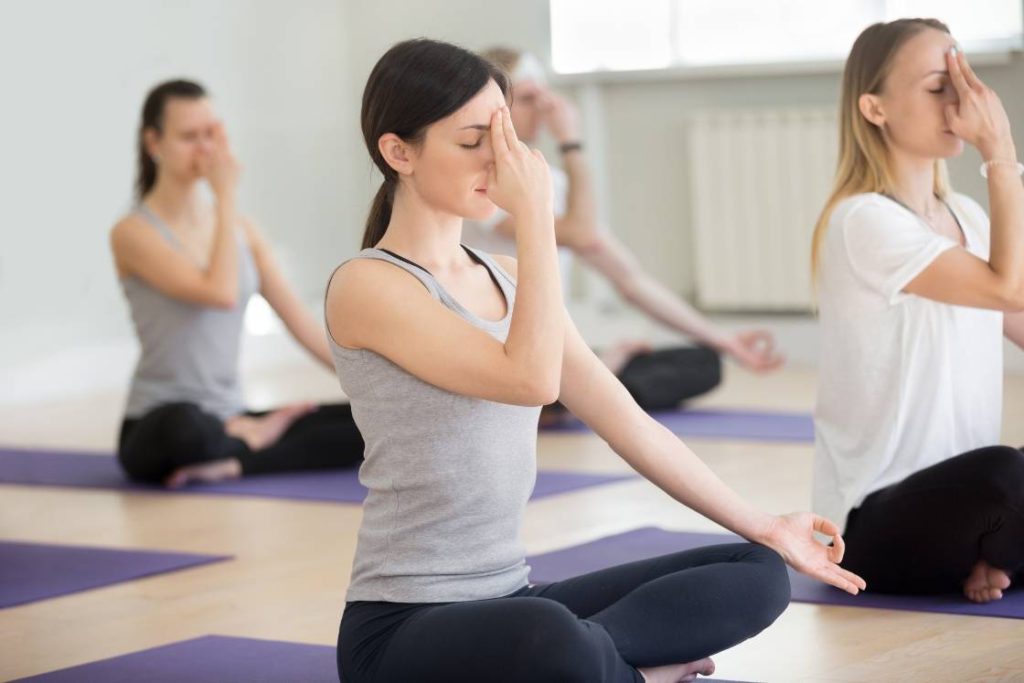We live in a culture that treats stress as a toxic force—something to escape, numb, or “manage.” Wellness industries market endless solutions to “combat” stress, from supplements to spa treatments. But what if we’ve misunderstood the very nature of stress itself? Emerging research suggests that stress isn’t the enemy—it’s misunderstood energy. It’s not a flaw in our system; it’s a feature designed to mobilize our inner resources.
The pounding heart, the quickened breath, the electric tension in your muscles—these aren’t signs of collapse, but signals from your body that it’s preparing for action. This is your built-in fight-or-flight response, an evolutionary gift that sharpens focus, heightens awareness, and boosts performance. According to the American Psychological Association, stress becomes harmful only when we don’t know how to interpret or respond to it effectively.
Unfortunately, many of us are taught to resist or suppress these sensations. Without training, we misread stress as a threat, triggering panic or paralysis. But when guided with intentional techniques, stress becomes power. Like fire, it can warm or destroy depending on how it’s contained. Cognitive behavioral strategies and awareness tools can help us turn raw tension into focused, productive energy.
This change in mindset—from fighting stress to training it—opens a new way of living. It teaches us that stress isn’t a sign we’re breaking; it’s a sign we’re stepping up. As performance psychology shows, what holds us back is not the stress itself, but our reaction to it. With the right tools, stress becomes a launchpad for resilience, not a wall that blocks our way forward.
In this article, we’ll explore practical, science-backed strategies to help you turn stress into your ally. You’ll learn how to recognize early signals in your body, apply tools like breathwork, physical movement, and targeted focus to channel that energy into momentum. Because once you stop fighting stress and start training it, you’ll realize it was never your enemy—it was your unused potential.
Stress Feels Bad—But It’s Actually Fuel
Stress feels uncomfortable—tight chest, racing heart, sweaty palms—but that’s not failure; it’s activation. These signals come from your sympathetic nervous system, preparing your body to rise to a challenge. This response, often called the “fight-or-flight” reaction, evolved to help us survive danger. But today, the “danger” is a work deadline or a conversation—not a tiger. Recognizing this shift changes how we respond.
Your body releases adrenaline and cortisol, which increase heart rate and sharpen mental focus. While we often interpret these effects as anxiety, they are actually part of your body’s high-performance mode. According to Cleveland Clinic, these chemicals are tools—not threats. Instead of resisting them, we can learn to direct them. This is where stress becomes fuel, not fear.
The problem is, we label all stress as negative. But there’s a difference between harmful stress and what psychologists call eustress, which boosts energy and motivation. Eustress is what athletes feel before a race, or what drives a student to study. Studies in performance psychology show that this kind of stress enhances clarity and outcomes. It’s not about eliminating stress—it’s about harnessing it.
If you’re feeling overwhelmed, reframe it: your body is responding because it’s ready. That energy can be focused with intention. When channeled, the same system that causes fear also fuels creative flow and performance. Breath and awareness help reroute scattered energy into productive movement. Stress becomes a signal—not a stop sign.
With the right mindset, you’ll start seeing stress differently. It’s no longer a warning—it’s a resource. The discomfort is temporary, but the performance edge it offers can be long-lasting. From public speakers to CEOs, people thrive under pressure by training how to respond. Your stress isn’t an enemy—it’s untapped power waiting to be refined.
The Problem Isn’t Stress—It’s Confusion
Stress is often misunderstood not because it’s harmful, but because we’ve never been taught how to work with it. When it hits, we experience overwhelm—racing thoughts, tight muscles, scattered attention. That’s not weakness; it’s lack of training. Most of us weren’t taught emotional regulation in school or at home. According to the American Psychological Association, this knowledge gap worsens how we experience stress.
What actually happens in our brain under stress is completely natural—and solvable. When we perceive a threat, the amygdala activates, flooding the body with cortisol and adrenaline. This puts the rational, decision-making part of the brain—the prefrontal cortex—on pause. It’s why you freeze, lash out, or panic in high-stakes moments. But these aren’t failures—they’re biological defaults that can be retrained.
What makes it worse is our cultural response to stress. We’re often told to “calm down” or “not worry,” which only fuels more shame. Without tools, we think the stress means something is wrong with us. But stress is simply energy without a pathway. Studies on emotional avoidance show that suppressing stress responses actually increases long-term anxiety. What we need instead is education and somatic awareness.
The good news? Your body gives early signals long before full panic sets in. That might be a clenched jaw, tight breath, or sinking feeling in your stomach. These are internal alerts that you’re moving toward a stress threshold. The practice of interoception, or sensing internal body states, helps you recognize these cues. Catching stress early makes it far easier to manage and redirect.
One of the most effective reset tools is your breath. Techniques like box breathing or 4-7-8 breathing help regulate the nervous system in minutes. These practices engage the parasympathetic system, shifting you from “fight-or-flight” to “rest-and-digest.” Breath is portable, immediate, and always accessible. Once you learn to use it, stress becomes less of a storm—and more of a signal you can guide.

This infographic highlights the global health impact of stress, emphasizing that 75–90% of doctor visits are related to stress-induced ailments. It also cites studies showing that 77% of people experience physical symptoms from stress, and links it to serious conditions like heart disease.
Learn to Catch Stress Before It Hijacks You
Stress doesn’t usually arrive all at once—it builds gradually, often unnoticed. A slightly elevated heart rate, tense shoulders, or shallow breathing might be the first signs. These are subtle body cues that you’re entering a stress response. Learning to notice them is a form of emotional intelligence that gives you time to act before the panic hits. Most people respond late, but early awareness gives you the upper hand.
This ability to detect stress early comes from strengthening your interoception, or internal bodily awareness. Research shows that people with high interoceptive awareness can manage anxiety more effectively and recover from stress faster. You can develop this skill through daily body scans or breath checks. When your body starts whispering, you’re more likely to respond with clarity. Miss the whispers, and you’ll be fighting the storm.
Your breath is often the first indicator of rising stress—it shortens, quickens, and moves to the chest. By doing regular mindful breath checks, you can recalibrate quickly. Even three conscious breaths can bring the nervous system back into balance. This small habit helps prevent overactivation of the sympathetic nervous system. In essence, breath becomes your stress “checkpoint.”
Another powerful cue is posture. Under stress, your body tends to fold inward—shoulders round, spine curves, chest collapses. This posture reinforces a sense of powerlessness. But when you correct it, standing tall and opening the chest, you activate a biopsychosocial feedback loop. This sends your brain signals of confidence and safety, which reduce cortisol and ease anxiety.
To make all of this stick, build short check-ins into your day. Pause after every meeting, stretch once an hour, or set a breath timer on your phone. These micro-habits build awareness and prevent escalation. According to behavioral psychology, small, frequent interventions are more effective than occasional large ones. Early signals are easier to handle than full-blown stress—if you catch them, you stay in charge.
Channel It Into Action, Not Panic
Once you recognize the signs of stress, the next step is to redirect that energy. Without a target, stress tends to spiral into anxiety or paralysis. But if you give it direction, it becomes a performance enhancer. Asking yourself, “What’s my next move?” engages the rational mind and short-circuits the panic loop. It’s a small shift—but it makes a massive difference in how stress feels.
The reason this works is neurological: action activates the prefrontal cortex, which is responsible for decision-making and planning. Once re-engaged, your brain shifts from reacting to responding. The longer you stay frozen, the more the amygdala dominates, which amplifies fear. By taking even one small action—writing a note, changing posture—you reset your system. You give your brain proof that you’re safe and in control.
This principle is rooted in cognitive behavioral therapy (CBT), where behavior interrupts thought loops. When stress is left unchanneled, it fuels catastrophizing and rumination. But when it’s paired with intentional action, it becomes fuel for momentum. You don’t need a full solution—just a first step. Action narrows focus, quiets noise, and reminds you: you’re capable.
Think of stress like fire—it can burn, or it can light the path forward. Without control, it destroys. With skill, it powers engines and forges metal. This is how elite performers handle pressure: they train their brains to respond automatically with forward motion. Athletes, surgeons, and performers all use this principle, transforming nerves into execution energy.
Train Your Stress Response Like a Muscle
Just like physical strength, your ability to manage stress improves with training. Most people try to handle stress only when they’re overwhelmed—but by then, it’s too late. Practicing stress-regulation techniques during calm moments builds mental endurance. According to neuroscientists, repeated exposure to mild stress in a controlled way builds emotional resilience. It’s about preparing the mind before pressure hits.
Breathwork is one of the most effective tools for stress training. Methods like box breathing and coherent breathing help regulate your heart rate and calm your nervous system. Practicing these daily improves your vagal tone—a measure of your body’s capacity to recover from stress. Athletes and military personnel use these techniques to maintain focus under fire. With repetition, breath becomes a reflexive response to stress.
Visualization also strengthens your response system. Olympic athletes and elite performers regularly engage in mental rehearsal, visualizing success under pressure. When you imagine yourself handling tough situations calmly, your brain encodes those experiences as real. This activates the same neural pathways used during actual performance. You can start by imagining your response to a future challenge—and mentally rehearsing strength and poise.
Body awareness is another layer of the training. By scanning your body for tension—jaw, shoulders, stomach—you learn to intercept stress early. Somatic therapy shows that physical awareness boosts emotional regulation. Try setting daily reminders to do a quick body scan. The more familiar you become with your tension patterns, the faster you can release them before they snowball.
Consistency is what creates results. You don’t need hour-long routines—just 5 to 10 minutes a day of breathwork, visualization, and body scanning. According to behavioral science, frequent repetition builds habits into identity. Over time, your stress response shifts from panic to presence. Like any skill, calm under pressure is something you build—and it starts with daily reps.
Move Your Body to Clear Excess Energy
Stress builds up in the body as tension—tight shoulders, clenched jaws, restless limbs. When this energy has no outlet, it accumulates and becomes agitation or fatigue. Movement is your fastest tool to release stored stress and rebalance your system. According to the American Psychological Association, physical activity significantly lowers cortisol levels. Even a few minutes of walking or stretching can calm your nervous system.
This isn’t about intense workouts—small movements matter most. Try shaking out your arms, rolling your neck, or doing a few light squats. These movements activate your lymphatic system, helping flush out stress chemicals. Gentle stretching reduces muscle tension and boosts circulation. Over time, you’ll notice how even simple motion instantly relieves mental heaviness.
One reason movement is so effective is because it re-engages the mind-body connection. When you’re stressed, your body often goes rigid while your thoughts race. Exercise, even in microbursts, helps ground those thoughts in motion. Research on embodied cognition shows that physical actions can directly influence emotional states. Moving your body tells your brain: “We’re not stuck—we’re in motion.”
Outdoor movement brings additional benefits. Walking in natural environments reduces anxiety and improves mood, a phenomenon known as green exercise. Studies on nature therapy show lower blood pressure and faster stress recovery in outdoor settings. Even standing barefoot on grass—a grounding practice called earthing—has measurable calming effects. Your surroundings can become part of your regulation toolkit.
If you feel drained after a long meeting or heavy news, don’t just sit and ruminate—move. Dance in place, stretch your back, or take a brisk walk around the block. Movement metabolizes stress, interrupts worry, and brings clarity. According to neuroscientist Wendy Suzuki,, movement changes your brain in real time. Physical activity isn’t just for fitness—it’s stress medicine in motion.

This infographic outlines four core strategies for managing stress and anxiety, including centering techniques like meditation and breathing, and creative outlets like arts and movement. It also emphasizes the importance of self-reflection, healthy habits, and strong relationships in building emotional resilience.
Use Your Stress Before Presentations or Competitions
Before a big performance—whether it’s a public talk, an exam, or a game—stress is guaranteed. Your body tenses, your breath shortens, your mind races. But instead of resisting it, you can prime yourself to use that energy. Elite athletes and performers rely on this very state for sharpness and focus. According to Harvard Business Review, reframing stress as excitement boosts confidence and results.
Breath and posture are your first tools for converting nerves into presence. Try power posing—standing tall with open shoulders—for two minutes. This posture raises testosterone and lowers cortisol, signaling calm authority. Pair it with coherent breathing—slow, steady breaths that stabilize your heart rate. These practices shift you from reactive to ready.
Visualization is another high-impact method. Athletes use mental rehearsal to run through successful routines in their mind before ever moving a muscle. You can do the same before a presentation or test. Picture yourself calm, focused, and delivering with clarity. This activates your brain’s mirror neurons, making the real moment feel familiar and achievable.
It also helps to reinterpret your body’s signals. Instead of saying “I’m anxious,” say “I’m excited.” This technique—known as anxiety reappraisal—shifts your emotional state while keeping your energy intact. Your heart is beating faster because you care. That energy can sharpen your delivery, not sabotage it.
Use rituals to anchor yourself. Create a pre-performance checklist: breathe, stretch, posture check, visualize. These actions cue your brain to enter a focused, calm state. According to performance psychology, rituals increase consistency and reduce panic. Stress isn’t the enemy before big moments—it’s the fuel for your best self to show up.
I Used to Drown in Stress—Now I Ride It
For a long time, I saw stress as something to fear and avoid. Before every exam, I’d feel a wave of pressure that left me paralyzed. My chest would tighten, my mind would race, and I’d tell myself I wasn’t ready. That reaction was common—but also misguided. According to The Greater Good Science Center, stress becomes damaging only when we fear it, not when we face it.
The turning point came when I learned that these stress signals were actually signs of readiness. Through cognitive reframing, I began viewing my racing heart as energy, not alarm. Breathwork, especially box breathing, helped bring my mind back online. I stopped freezing and started focusing. What used to be panic became a doorway into performance.
Over time, I started implementing micro-resets before exams—simple practices like standing tall, breathing deeply, and reciting a cue phrase like “You’ve got this.” These tools helped me feel grounded. The stress didn’t disappear, but it transformed from chaos into clarity. I began to respond, not react.
This shift didn’t just help in exams—it changed how I approached everyday challenges. Stressful conversations, tight deadlines, and unexpected problems became opportunities to practice my new skills. I was building what researchers call “stress resilience”, the ability to bounce back quickly. And every time I succeeded, my confidence grew.
I no longer see stress as something to escape from. Instead, I see it as momentum waiting to be directed. I still get nervous. My body still responds. But now, I ride that wave with tools, intention, and trust in myself. My stress didn’t disappear—it became my edge.
Stress Will Always Be There. That’s Okay.
We often imagine a future where stress disappears—a calm, pressure-free life. But in reality, stress is part of being alive. Whether it’s a new job, a big decision, or an unexpected challenge, stress will always return. According to Stanford psychologist Kelly McGonigal, it’s not about avoiding stress, but changing your relationship with it. Acceptance, not elimination, is the path to peace.
Trying to remove all stress is not only unrealistic—it can actually backfire. Suppressing emotional energy can lead to chronic stress and burnout over time. Instead, resilience comes from understanding that stress is a signal, not a threat. It’s your body’s way of saying, “Something matters here—pay attention.” Recognizing that truth removes the fear and brings empowerment.
The goal isn’t a stress-free life—it’s a well-regulated nervous system. With tools like breathwork, movement, posture shifts, and visualization, you can ride the wave without being swept away. Studies in nervous system regulation show that those who build these habits recover faster and stay sharper. You can’t always change the event—but you can change your internal response.
Mastery begins when you stop fighting stress and start working with it. Instead of “I’m stressed,” say “I’m activated.” That one phrase shifts the narrative from struggle to readiness. As performance coach Simon Sinek explains, language directs the mind—and the body follows. Stress isn’t a sign of weakness. It’s raw energy you can learn to shape.
So let stress be there. Let it show up before a speech, a decision, or a new challenge. But also know: you’re not powerless. You carry tools inside you—tools that calm, focus, and realign. With time, you’ll see that stress doesn’t mean “stop.” It simply means “focus now.”
Don’t Kill Your Stress. Train It.
The key takeaway is simple: stress isn’t your enemy—it’s untrained energy. Trying to eliminate stress is like trying to live without weather—it’s impossible and unnecessary. Instead, you can channel stress through consistent, intentional habits. Tools like breathwork, focused movement, and posture cues rewire your nervous system. The goal isn’t silence—it’s mastery.
Start with the breath. Deep breathing activates your parasympathetic nervous system and brings your mind back online. Use methods like 4-7-8 breathing or box breathing to shift quickly into calm. Make this your go-to reset before meetings, tough conversations, or transitions. The breath is free, portable, and always available. With regular use, it becomes a reflex under pressure.
Next, add focus. Ask yourself: “What matters now?” or “What’s one small step I can take?” Questions like these guide scattered energy into intention. According to cognitive science, even brief focus resets shift your brain from panic to problem-solving. This is how top performers stay grounded—they use their attention like a compass, not a flashlight.
Movement is your third lever. Tension held in the body becomes fuel for anxiety, but motion turns it into clarity. Shake out your arms, walk briskly, or stretch your spine. Studies on somatic regulation show that small physical shifts improve both mood and cognition. Movement doesn’t just relax you—it reminds your system that it’s safe to respond.
Lastly, act. Stress without action becomes stagnation; stress with direction becomes momentum. Take the next small step, no matter how imperfect. According to James Clear, action builds identity. When you act calmly under pressure, you teach yourself: “I’m capable.” Stress doesn’t block your progress—it fuels it when trained well.
Frequently Asked Questions on Stress Is Not the Enemy—It’s Untrained Energy: Here’s How to Use It Right
What happens in the body when we feel stressed?
When you’re stressed, your body activates the sympathetic nervous system, releasing adrenaline and cortisol. These hormones increase your heart rate and focus, preparing you to take action—not shut down.
Why does stress feel overwhelming if it’s supposed to help us?
Stress becomes overwhelming when it’s not given direction. That surge of energy, if unmanaged, often spirals into anxiety. But with intention, it can be channeled into clarity and performance.
Why are we so unprepared to deal with stress?
We’re rarely taught emotional regulation skills, so stress often feels unfamiliar and threatening. Most people never learn to work with stress as a biological signal, not a personal flaw.
What are the typical stress responses and why do they happen?
Common responses like freezing, fighting, or fleeing are driven by the amygdala—your brain’s threat detector. These are automatic survival mechanisms, but they can be retrained with practice.
What are the early signs that stress is building up?
Look for cues like shallow breathing, tight shoulders, or clenched jaws. These small changes signal your body is gearing up—catching them early lets you reset before a full-blown reaction kicks in.
Why is it important to catch stress early?
Catching stress early helps you stay in control. It’s easier to redirect low-level stress than to calm down once you’ve hit panic mode. Early awareness empowers timely action.
How can I redirect stress into something productive?
Ask yourself, “What’s my next move?” This question engages the logical part of your brain and interrupts the stress spiral, transforming emotion into movement and clarity.
Why is action better than overthinking when I’m stressed?
Taking action, even small steps, interrupts overthinking and helps re-center your mind. Action gives stress a pathway to move through, instead of letting it build up and paralyze you.
Can I really train my body to handle stress better?
Yes—your stress response is trainable like a muscle. Daily breathwork, mindset practices, and movement patterns help build a calm, resilient nervous system that performs better under pressure.
What practices help build a better stress response over time?
Try techniques like box breathing, visualization, or somatic scanning. These strengthen your body’s ability to stay centered and recover quickly during high-pressure situations.
Why does physical movement help with stress?
Movement helps discharge excess cortisol and tension. It restores circulation, releases built-up energy, and activates the parasympathetic nervous system, bringing calm and clarity.
What are the best physical activities for quick stress relief?
Gentle exercises like walking, stretching, dancing, or shaking out your limbs are incredibly effective. These movements help the body process emotional energy and reset.
How do athletes and performers use stress to their advantage?
They prepare for pressure by practicing breathwork, posture alignment, and visualization. These tools help convert nerves into laser-focused energy during performances or competitions.
What should I do just before a high-stakes moment?
Stand tall, breathe slowly, and imagine a successful outcome. These rituals signal confidence to your body and reduce cortisol, helping you perform at your peak.
How can stress become something I ride instead of fear?
By reframing stress as energy with a purpose, and practicing tools that guide it, you transform it from chaos into composure. With time, you’ll begin using stress instead of avoiding it.
Can past stressful experiences help build future resilience?
Yes. When you reflect, learn, and apply tools to navigate stress, you develop a stronger inner system. This process builds emotional resilience and confidence over time.
Is it realistic to expect a stress-free life?
Not at all. Stress is part of the human experience. The goal isn’t to eliminate it, but to manage it with tools that help you stay centered and effective, even under pressure.
How do I accept stress without letting it control me?
Accept stress as a biological signal rather than a threat. When you stop fearing it, you begin using it as motivation to focus, act, and respond with clarity.
What tools help convert stress into progress?
The most effective tools are breathwork, intentional focus, physical movement, and action. These regulate your body and direct stress into constructive energy.
Where should I start if I want to train my stress response?
Start with the breath. It’s the quickest and most accessible reset you have. Pair it with posture, presence, and action to turn stress into momentum—not meltdown.
–Authored by Barsha





